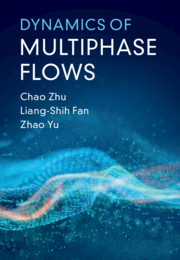9 - Separation of Multiphase Flows
from Part II - Application-Based Analysis of Multiphase Flows
Published online by Cambridge University Press: 10 September 2021
Summary
The phase separation of a multiphase flow is primarily achieved with an application of a specific mechanism that can lead to a distinctively different dynamic response of each phase in a multiphase medium. Such mechanisms include the gravitational settling (e.g., solids in fluids, droplets in immiscible fluids, bubbles in liquids or slurries), flow-induced alternation of phase inertia (e.g., centrifugal acceleration by flow rotation, jet dispersion, impaction on a surface), selective interception or blockage of phase transport (e.g., sieving; filtration), and separation using externally controlled field forces (e.g., electrostatic precipitation). A separation system or method can be developed by using one or a combination of these mechanisms. High separation efficiency and low mechanical energy loss are among the most important objectives for system design or selection. Actual separation of multiphase flows involves complicated phase transport, flow regimes, particle size distributions, and system geometries. Thus, aside from numerical modeling, much simplified analytical models with empirical correlations are still popular in practice.
Keywords
Information
- Type
- Chapter
- Information
- Dynamics of Multiphase Flows , pp. 377 - 422Publisher: Cambridge University PressPrint publication year: 2021
